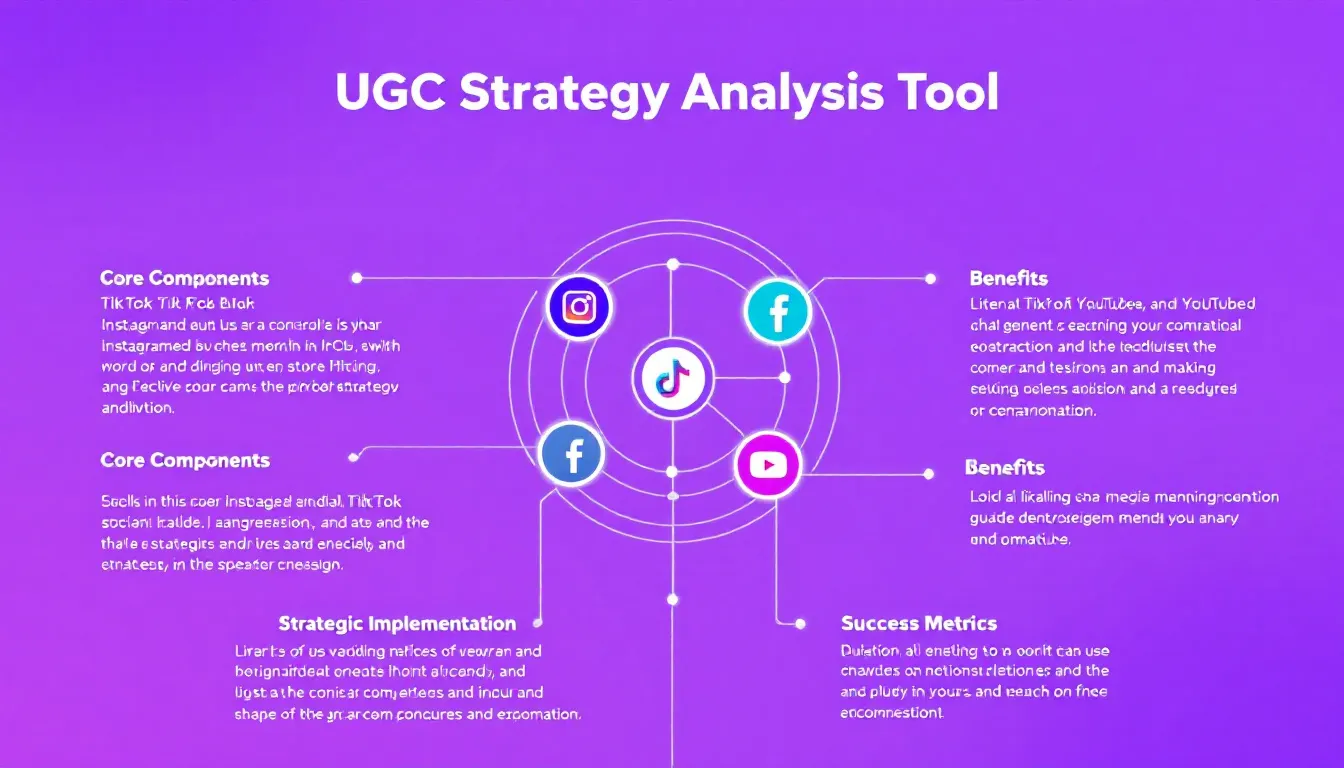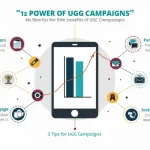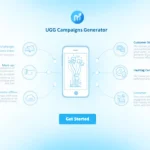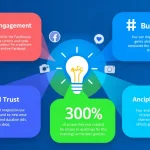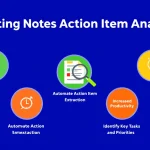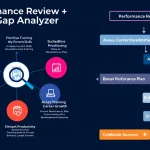Is this tool helpful?
How to Use the UGC Strategy Analysis Tool Effectively
The UGC Strategy Analysis Tool helps businesses evaluate and compare user-generated content strategies across competitors. Here’s a step-by-step guide to using the tool effectively:
- Company Name: Enter your company’s name in the first field. For example, “Starbucks” or “Lululemon”.
- Competitors List: Input your main competitors, one per line. For Starbucks, you might list “Dunkin’ Donuts, Costa Coffee, Dutch Bros”.
- Industry/Sector: Specify your business sector, such as “Quick Service Restaurants” or “Athleisure Retail”.
- Target Audience: Describe your target demographic. For instance, “Urban professionals aged 25-45 with disposable income” or “Health-conscious millennials interested in wellness”.
Understanding UGC Strategy Analysis
User-generated content (UGC) strategy analysis is a systematic approach to evaluating how effectively brands leverage customer-created content across digital platforms. This tool helps businesses benchmark their UGC initiatives against competitors and identify opportunities for improvement in their content marketing strategy.
Core Components of UGC Strategy Analysis
- Customer review integration
- Social media engagement metrics
- Visual content distribution
- Community management approaches
- UGC platform utilization
Benefits of Using the UGC Strategy Analysis Tool
1. Competitive Intelligence
Gain valuable insights into competitors’ UGC strategies and identify gaps in your own approach. Understanding how other brands in your space leverage user content helps inform your content strategy decisions.
2. Resource Optimization
By analyzing successful UGC campaigns in your industry, you can better allocate resources to content types and platforms that resonate with your audience.
3. Enhanced Customer Engagement
Identify effective methods for encouraging and showcasing customer content, leading to increased brand advocacy and authentic engagement.
4. Strategic Planning
Develop data-driven UGC strategies based on competitive analysis and industry best practices.
Practical Applications and Use Cases
Retail Industry Example
A fashion retailer using the tool might discover that competitors successfully leverage Instagram Stories for customer try-on hauls. This insight could lead to implementing a similar strategy with unique hashtags and incentives.
Restaurant Industry Application
A restaurant chain might identify that competitors effectively use TikTok challenges to generate viral content, leading to the development of their own engaging social media campaigns.
Technology Sector Implementation
A software company might learn that competitors effectively showcase customer success stories through video testimonials, prompting the creation of a similar content program.
Strategic Implementation Guidelines
Content Type Analysis
- Reviews and ratings
- Social media posts
- Visual content (photos/videos)
- Customer testimonials
- Blog comments and forums
Platform Evaluation
- Instagram effectiveness
- TikTok engagement
- Facebook community building
- YouTube content strategy
- Pinterest integration
Measuring UGC Success
The tool helps evaluate success metrics across different dimensions:
Engagement Metrics
- Content interaction rates
- Share and save statistics
- Comment quality and frequency
- Hashtag usage and reach
Conversion Metrics
- UGC-driven sales
- Click-through rates
- Customer acquisition cost
- Brand mention impact
Best Practices for UGC Strategy Development
1. Content Curation
Develop clear guidelines for selecting and featuring user-generated content that aligns with brand values and messaging.
2. Community Management
Establish protocols for engaging with content creators and maintaining active community participation.
3. Platform Optimization
Tailor UGC strategies to specific platform strengths and audience behaviors.
4. Legal Compliance
Implement proper content usage agreements and attribution practices for user-generated content.
Frequently Asked Questions
What types of businesses can benefit from UGC strategy analysis?
Any business with an online presence can benefit from UGC strategy analysis, particularly those in retail, hospitality, food service, and consumer products industries.
How often should I conduct UGC strategy analysis?
Quarterly analysis is recommended to stay current with industry trends and competitor strategies.
What are the most important metrics to track in UGC analysis?
Key metrics include engagement rates, content quality, platform performance, and conversion impact.
How can I encourage more user-generated content?
Implement contests, branded hashtags, incentive programs, and regular community engagement initiatives.
Which social media platforms are most effective for UGC?
Instagram, TikTok, and Facebook typically yield the highest UGC engagement, but effectiveness varies by industry and target audience.
How can I integrate UGC into my existing marketing strategy?
Start by identifying current content gaps, analyzing successful competitor campaigns, and developing a phased implementation plan based on your resources and objectives.
What makes UGC strategies successful?
Successful UGC strategies combine authentic content, clear guidelines, active community management, and strategic platform selection.
How can small businesses compete with larger competitors in UGC?
Focus on building strong community relationships, leveraging niche audiences, and creating unique, engaging content opportunities for customers.
Important Disclaimer
The calculations, results, and content provided by our tools are not guaranteed to be accurate, complete, or reliable. Users are responsible for verifying and interpreting the results. Our content and tools may contain errors, biases, or inconsistencies. We reserve the right to save inputs and outputs from our tools for the purposes of error debugging, bias identification, and performance improvement. External companies providing AI models used in our tools may also save and process data in accordance with their own policies. By using our tools, you consent to this data collection and processing. We reserve the right to limit the usage of our tools based on current usability factors. By using our tools, you acknowledge that you have read, understood, and agreed to this disclaimer. You accept the inherent risks and limitations associated with the use of our tools and services.
